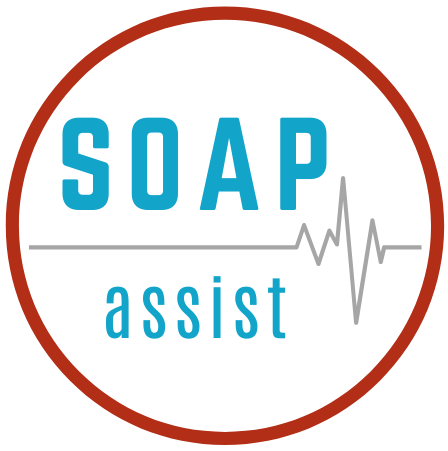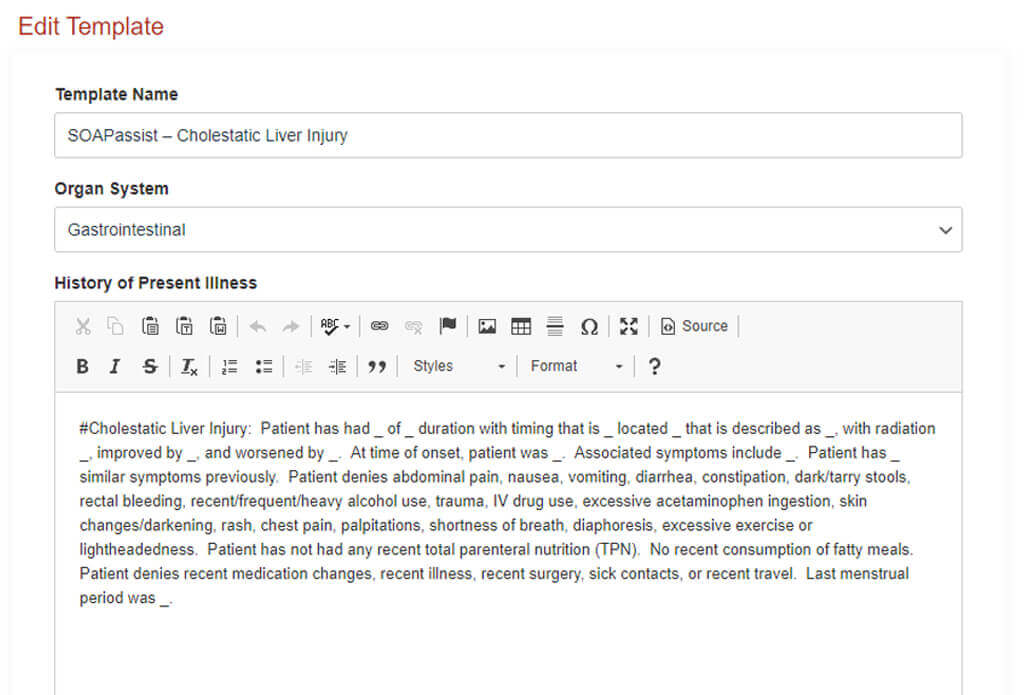The kidneys are critically important organs. They play a vital role in removing toxins and waste from the blood. They also participate in the homeostasis of electrolytes, vitamins, fluid, and in cell signaling. With all that they do, injury is quite common and can have a significant impact on the patient’s health.
Lest we forget
We have created a curated SOAP note template that streamlines your SOAP documentation. It also provides helpful prompts to avoid missing important testing and treatments. This template by no means captures every question, test and treatment that should be considered. However, it does provide a good starting point in creating a medical SOAP note. Let’s talk about what went into making this template.
Three buckets
Providers often think about the etiologies of acute kidney injury in terms of three categories: prerenal, intrinsic, and postrenal. While these do not necessarily encompass every possible etiology, it is a good starting point. This is because it captures the majority of common etiologies. Perhaps the most common group is prerenal. The etiologies in this group cause decreased perfusion to one or both kidneys. Fluid status and history pertaining to the patient’s fluid consumption is vitally important to making the diagnosis. Postrenal etiologies arise from obstruction of the ureter. Kidney stones are commonly implicated in postrenal acute kidney injury, but other etiologies such as malignancy can also cause obstruction.
The intrinsic category can be much more challenging in terms of diagnosis. If an intrinsic etiology is suspected, a biopsy is often done to make a diagnosis. In creating this SOAP note template we took these three categories into account. The initial assessment of the patient typically involves determining which category is at play. This template details the workup typically done to evaluate these various categories.
Center stage
Staging an acute kidney injury helps to communicate to other providers the severity of the injury. It also conveys an appropriate sense of urgency for arriving at a diagnosis and implementing a treatment plan. The staging system suggested by KDIGO is useful, but the details of which are difficult to remember. We have included the staging system within this template. It enables providers to quickly assign a stage and better communicate with other providers regarding disease severity.
When to call for help
Acute kidney injury can often be managed by the primary provider. However, certain circumstances may arise that indicate the need for the additional help of a nephrologist. One of these circumstances is the necessity for renal replacement therapy, the indications for which are several. Additional circumstances may indicate consultation with a nephrologist including difficulty managing fluids, electrolytes, or the need for renal biopsy. Some of these indications are detailed in this template. They are a good starting point for communicating when the additional help of a nephrologist may become necessary.
You’re going to put some miles on this template
As we’ve discussed, building well-constructed templates can streamline the SOAP documentation process. It can also provide reminders during the patient interview to ask important questions and discuss things that can change management. We recommend building and using templates that provide prompts to ask such questions. Additionally, considering a broad differential at the initial encounter can help ensure the appropriate workup and treatment are initiated promptly. As mentioned previously, this template by no means captures every question, test and treatment that should be considered. However, it does provide a good starting point. In fact, SOAPassist allows you to modify and save any SOAPassist curated template as your own. You read that correctly. SOAPassist is here to help make your documentation reflect your practice. Curated templates are the first step in that process.
Disclaimer: SOAPassist curated templates are created for use by licensed medical providers. While they are examples of what a provider might document, their intended purpose is to provide a starting point for documentation and do not constitute medical recommendations.
References:
-Khwaja A. KDIGO clinical practice guidelines for acute kidney injury. Nephron Clin Pract. 2012;120(4):c179-84. doi: 10.1159/000339789. Epub 2012 Aug 7. PMID: 22890468.

